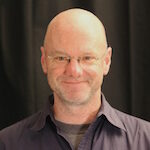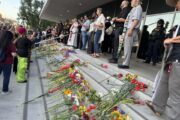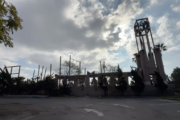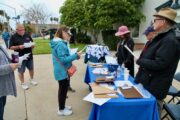During his comments at a recent Getty House event to mark the National Day of Prayer, Mayor Eric Garcetti referred to L.A.’s current cultural moment as “this hinge of history.”
Civic boosterism? Political hyperbole? What, exactly, did he mean?
“There isn’t a speech that I give now as the mayor of this city where I don’t talk about the fact that this is the most diverse collection of human beings in human history,” Garcetti said. “This is the pinnacle. We’ve had empires that have brought together people from all over what was then the known world, but Los Angeles actually brings together the entire world.”
True enough. But how do you get from the mere fact of Southern California’s singular diversity to the conclusion that the 20 million people in this sprawling, fractious megalopolis are living on the cusp of—again, what exactly?
One way—arguably, the best way—to answer that question is to look at how religious movements behave in this vast multicultural hothouse. Specifically, how do given groups relate to other spiritual groups, local civic institutions and broader trends in the zeitgeist? And how does that interplay between religion and other dimensions of culture shape religious communities as well as the larger social environment in L.A. and beyond?
Those are some of the questions behind CRCC’s Religious Competition and Creative Innovation (RCCI) project. One strategy we’re pursuing is to look at ways that increasing disaffiliation—the famously growing ranks of the “Nones”—along with hyper-local context and internal group dynamics can spark new forms of religious organization, identity and expression.
What does this investigation look like on the ground?
Take the roughly triangular region of Los Feliz, Silver Lake and East Hollywood captured on this map. Within an area of about one square mile, you can find expressions of mainline Protestantism, reverse-mission immigrant evangelicalism, Scientology, Native American spirituality, Indian guru lineage, Sikhism, Rationalism, LGBT Protestantism, Mormonism, Judaism, Buddhism—and a handful of loosely organized Meetup groups that have formed around religious identities that have yet to coalesce into any kind of ism.
Within this area—and in similarly dense sample areas in other parts of the Southland—we’ll survey key organizational actors to understand how their congregations (or whatever they may be called) operate internally, relate to institutions in the surrounding community and interact with other religious (or irreligious) movements. The purpose of this data gathering will be to pinpoint groups that are responding to their astonishingly diverse environment by creating novel organizational structures, communal activities, communication strategies or interpretive traditions.
Because in this most global of cities in the era of globalization, it is precisely these innovations that will shape next-generation religious movements in other parts of the world.
The future may belong to hybrid groups in Los Feliz such as Against the Stream and Self-Realization Fellowship—both of which, like twentieth-century Pentecostalism, grew from spiritual seeds that blew into Southern California from elsewhere and sprouted here in distinctly new ways. But in any case, our prognostications will grow clearer as the RCCI project gathers steam in the coming months. So stay tuned—we hope to have some definite things to say about which way that hinge of history is likely to swing.
(Photos by Nick Street, collage by Kyle Valdez)
Nick Street was a senior writer with the USC Center for Religion and Civic Culture.








